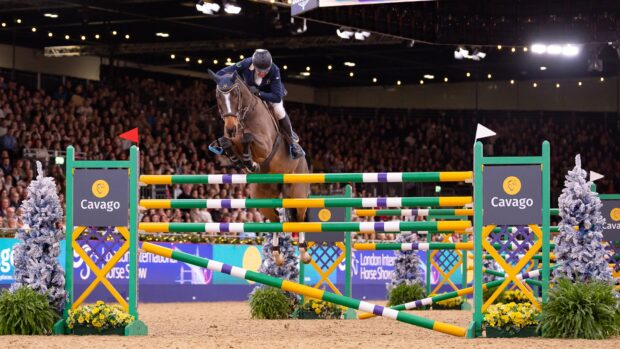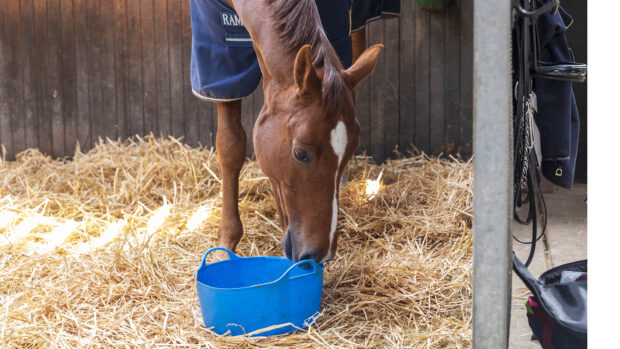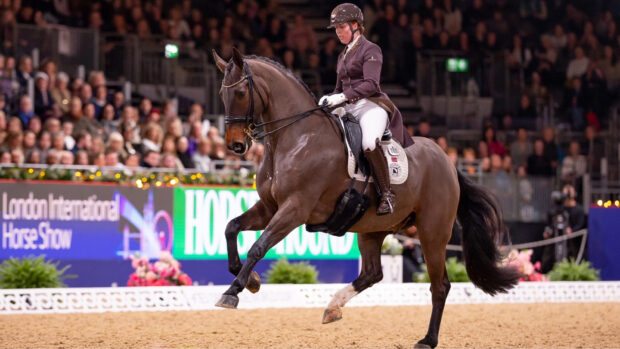Jennifer Postollec is a French equine osteopath specialising in biomechanics with more than 15 years experience. She has been living in the UK since 2015 and is the UK’s only certified algotherapy practitioner. She aims to educate owners and riders on why understanding the horse – both physiological and mentally – is key to enhancing the performance and the relationship of the horse and rider partnership.
Rollkur or hyperflexion – whatever you choose to call it, this training method is not in the best interest of our horses. But do you understand why it is so detrimental to horses on a physiological and emotional level?
As a horse owner and equine osteopath my main focus is to be able to understand the physiological limits of the horses to avoid cognitive constraints and pathologies, and to be able to give the most suitable advice to my patients.
Healthy and ethical riding is important for better physical functionality of the horse’s body and this involves, among other things, carrying the head slightly in front of the vertical.
In our everyday riding, horses can occasionally bring their nose towards their chest and end up behind the vertical; this can happen because the horse wants to avoid the contact, lacks impulsion and/or balance, or because of coercive training methods.
When the rider intentionally locks the horse’s head and the neck angle, this also locks the respiratory pathway so the horse cannot breathe properly.
There are very important anatomic structures in this area, including the larynx, which controls the airflow. This organ is attached to the hyoid bone – the tongue support – which is located between the pharynx and the trachea.
If there is a movement restriction, or even worse a paralysis, of these structures, this will compromise the breathing capacity of the horse. This discomfort will be increased during physical exercise. You might notice that your horse starts to make a noise when exercised. He makes a “roaring” noise because the exercise is too intense or too hard because of laryngeal paralysis.
This serious disease is easily recognisable because the horse makes a significant noise during times of effort and while he is breathing, or at least trying to.
Below the larynx is the trachea, which is part of the bronchi of the respiratory tree. It ends near the heart in the trunk with two main bronchi. The trachea is made of cartilaginous rings so it is pretty much flexible, but also fragile. It can follow the neck movements and, as long as the trachea is not damaged by any strains or repetitive stress, it is able to protect the respiratory pathway and play its main role: controlling the airflow between the larynx and the bronchi.
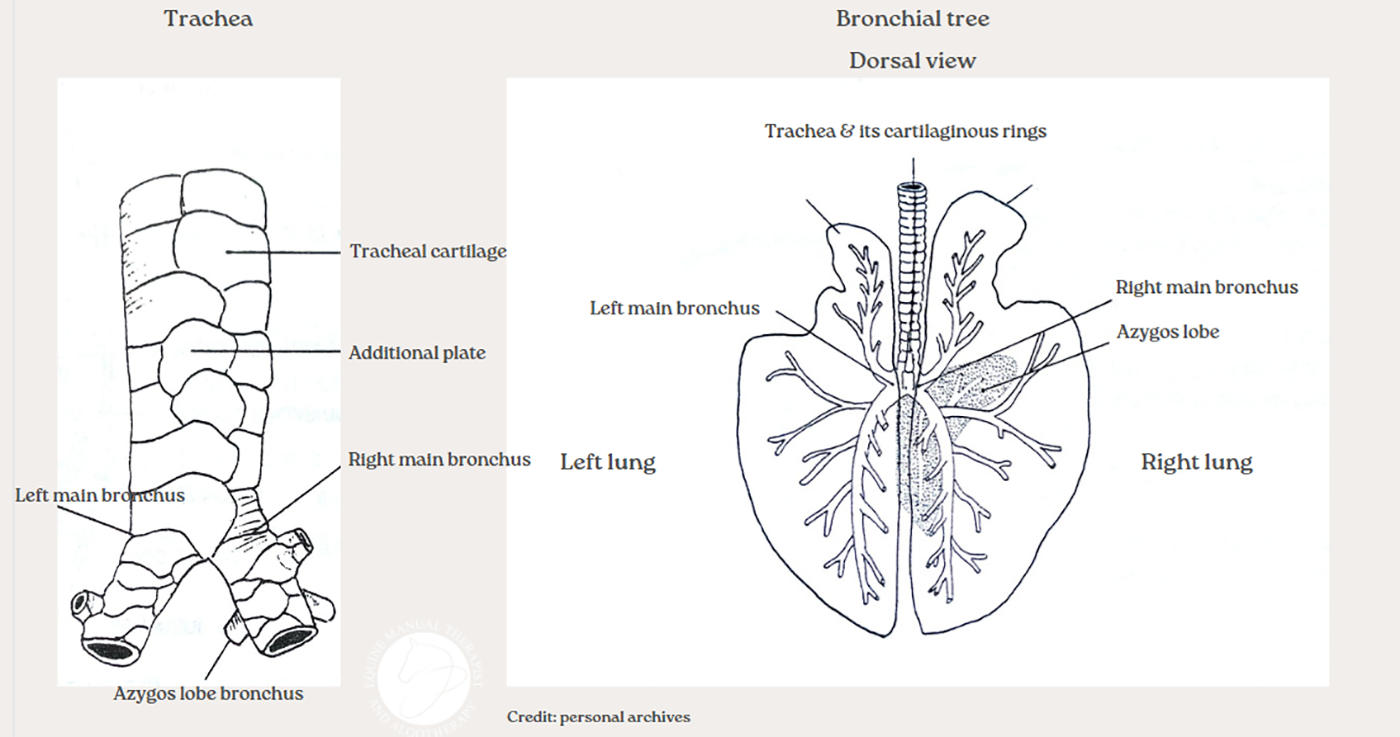
The horse’s central nervous system runs through the vertebrae from the poll to the tail. When the central nervous system is stressed or overstimulated – such as during coercive training – the vertebrae can interlock in a certain way; this is a physiological response from the body to keep going (i.e. analgesic position). This is the result of the adaptation of the system by distributing the forces inside the body (commonly called the tensegrity). Tensegrity creates the posture and any changes in the tensegrity changes the posture.
Over time, the pathologies on the central and peripheral nervous systems induced by the repetitive use of hyperflexion in horses’ training can appear as spondylolisthesis (spinal displacement), scoliosis or asymmetry, ataxia, change in posture, weakness in legs, bone spurs, disc protrusions, stress fractures and/or kissing spines.
Looking at the nerves of the horse’s head and the neck it is logical that constant pulling, tension, and traction will affect their functions and their roles.
The vagus nerve (the tenth pair of cervical nerves, which belong to the peripheral nervous system) is very interesting because it acts as sensory (to relay message) and motor (to control muscle movements) to the pharynx and the larynx – “the voice box”. It contains many important parasympathetic fibres; the main purpose is to stock the energy for vital functions in the body, like digestion, and plays an important role in the sensitivity of a multitude of organs: pharynx, larynx, oesophagus, trachea, bronchi, heart, and abdominal viscera. The vagus innervation ends at the junction between the midgut and hindgut.
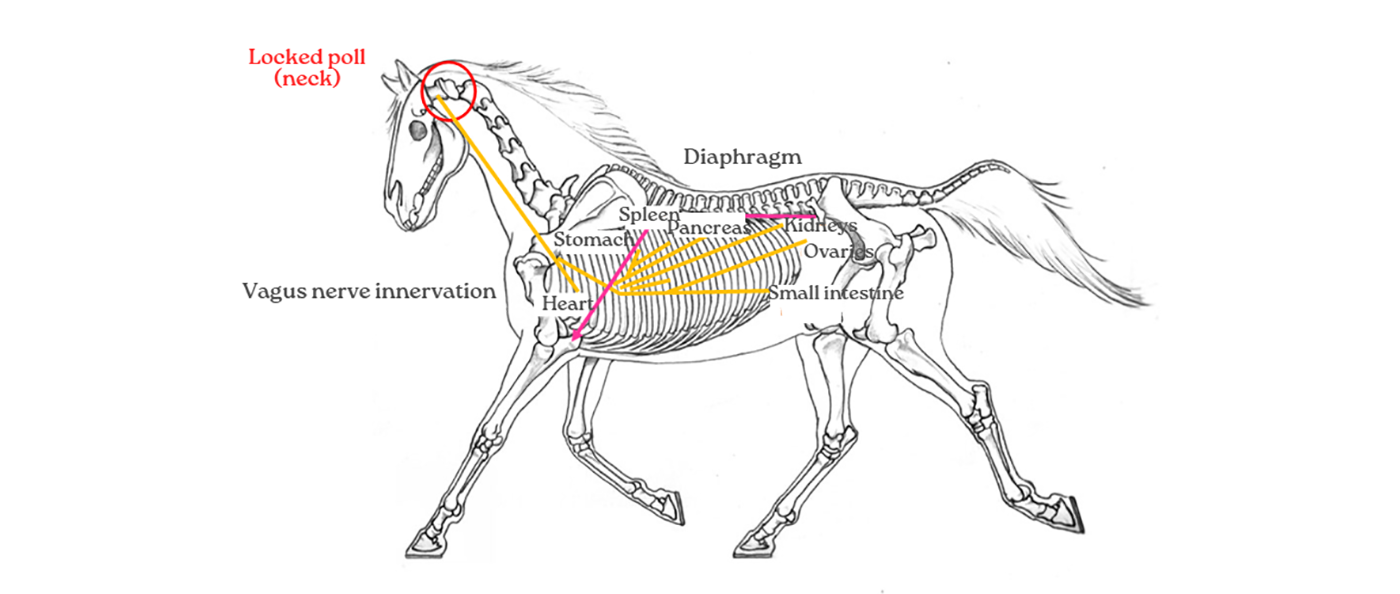
If a horse has tension in the neck (caused by rollkur, hyperflexion and/or training aids), he may develop a large number of disorders: colic, gastric ulcers, gastric dysfunctions and hyperactivity of the intestines are commonly seen on my daily rounds.
Signs of gastrointestinal disorders will vary from one horse to another, but may include: girthy, pain face when tacking up, grinding teeth, repetitive yawning, sensitivity to your left leg, gas, tense belly and pain in the lumbo sacral area.
The superficial nerves of the face will be overstimulated, which is painful (and may be the origin of headshaking syndrome), leading to headaches because the horse will suffer from intracranial tensions. Craniosacral therapy is what I use to relieve the pain and tensions.
So, what happens on the energetic side when the horse is (forced to stay) in hyperflexion?
Hyperflexion restricts the movement of the mandible, the temporo mandibular joint, the poll, and prevents the functioning of swallowing.

The stomach meridian shown as a line overlayed on the horse’s body.
The study of the stomach meridian is interesting because it runs on the ventral myofascial chain, which means there will be repercussions on the horse’s locomotion. Everything which is related to the horse’s mouth is related to the stomach and its associated emotion is anxiety. If your horse is grinding his teeth, or sticking their tongue out, this highlights a discomfort, either emotionally or physically.
You should never underestimate this sign because it is a cry for help from an unhappy horse.
Few people understand that when you close the neck and the head angle, you also shut an important internal energy pathway: the throat chakra. The energy related to this chakra is that of self-expression and being heard. This chakra is associated with the throat, thyroid, teeth, gums, trachea, oesophagus and the cervical vertebrae.
I hope this helps riders understand the symbolic and the metaphor behind riding in hyperflexion; by keeping a horse’s mouth shut, riders are preventing their horses from expressing themselves, their fears, their feelings.
In the words of General Decarpentry: “We cannot listen to a horse while silencing him”
- If you’d like to find out more about Jennifer and her work, visit equinemanualtherapist.com
Did you enjoy reading this exclusive article by Jennifer Postollec? We used the support we receive from our website subscribers to create this article. If you’d like to support our work, enabling us to invest in even more exclusive journalism like this – as well as enjoying unlimited access to our online breaking news service, expert opinion and event analysis, our extensive vet library, plus training advice, you can subscribe today from as little as £1 a week*. View offers.
*Annual subscription billed today as £52 for 1 year. Renews automatically after first year at standard price £87.99, and we will notify you of any price increases in advance. Cancel auto-renewal at any time.
You may also be interest in…
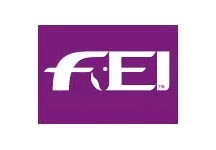
FEI outlaws rollkur when ridden using ‘aggressive force’
The International Equestrian Federation has agreed that rollkur, or flexion of the horse’s neck achieved through aggressive force, has no

Rollkur rules give stewards guidelines to stop horse abuse
Stewards now have a list of guidelines to help them spot abuse of the horse in collecting rings at competitions

Swiss government bans rollkur
Switzerland has introduced a tough new welfare law against controversial training methods

Subscribe to Horse & Hound magazine today – and enjoy unlimited website access all year round

